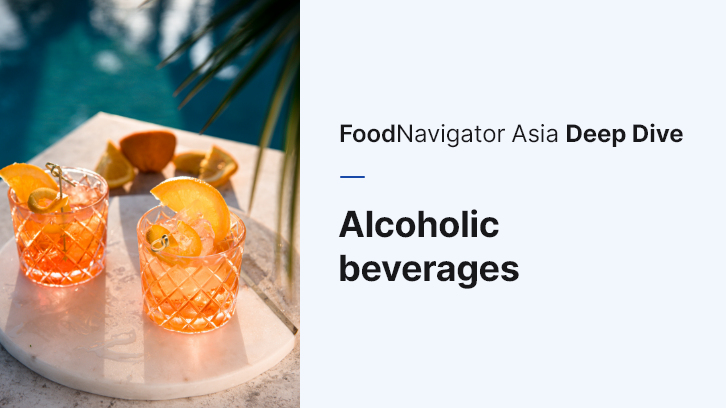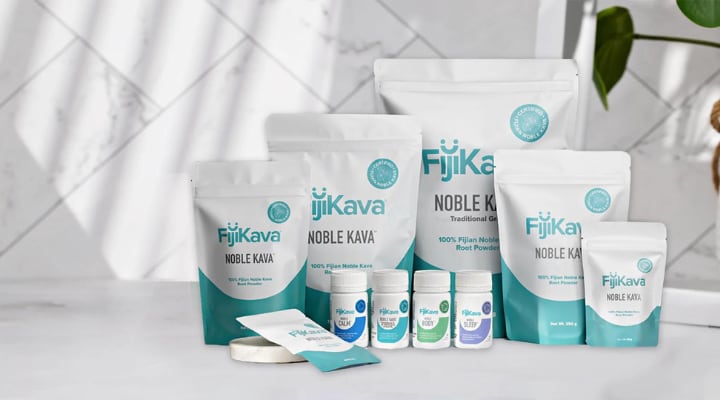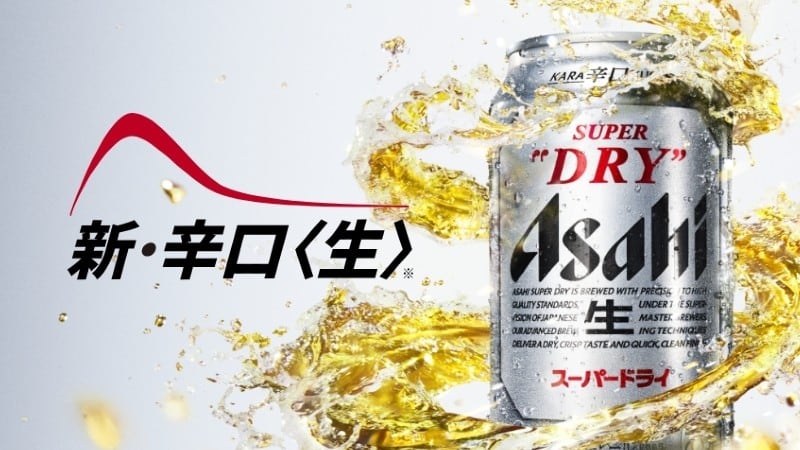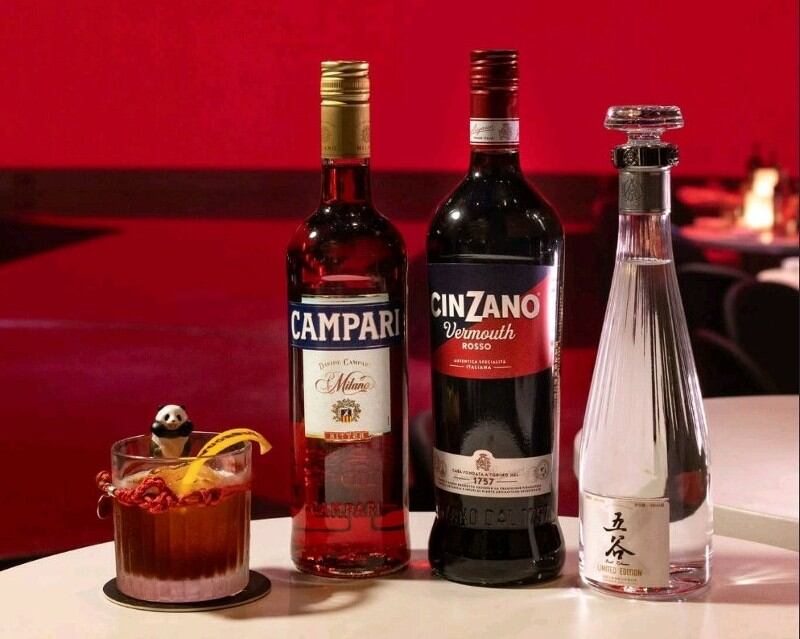Alcohol is still considered a primary social beverage in the region, particularly when it comes to festive celebrations – but compared to a decade ago when value was mostly conferred based on alcohol content, the demands of today’s drinkers are far more complex.
This includes the rapid rise of the craft scene across multiple alcohol categories over the past few years, with a focus on areas such as uniqueness, presentation and flavours.
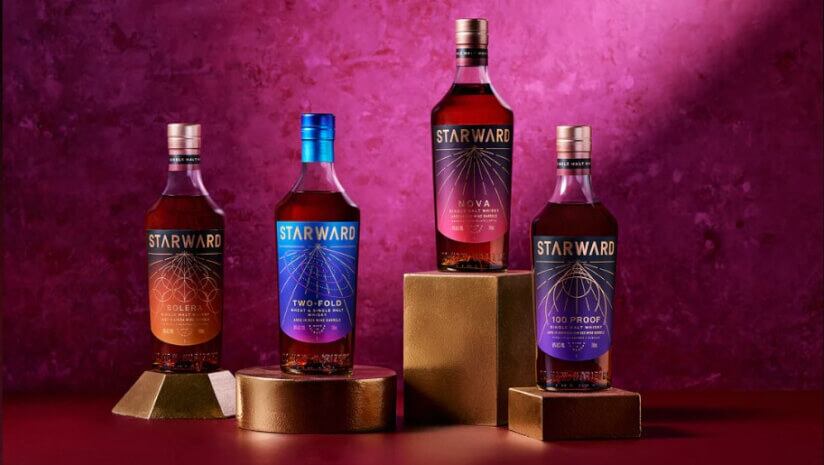
One such brand is Australian spirits distillery Starward with its ‘modern’ whiskeys, looking to clearly distinguish itself from traditional whiskeys like scotch.
“The focus is on provenance and we do this by using local Australian barley and maturing it in Australian wine barrels,” Starward Commercial Director told FoodNavigator-Asia.
“The use of wine barrels also gives each variant of whiskey very unique and distinct barrels depending on the wines that were stored in them previously such as Cabernet or brut.
“We believe that we have a product with strong appeal especially for younger, more dynamic consumers, and have also focused strongly on bright packaging and making our brand story more prominent in order to appeal to this demographic.”
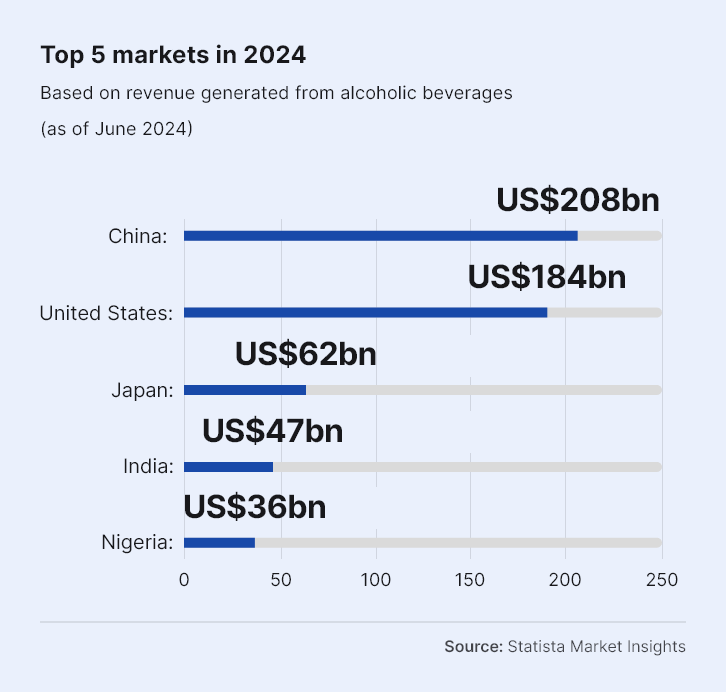
Younger consumers including millennials and older Gen Z’s are the primary driving force behind the growth of the craft alcohol industry, and the lure of a novel and unique product that has a modernised presentation is generally targeted at this group.
There can also be no doubt that this demographic is rapidly growing in size, as more Gen Z consumers are reaching legal drinking age and become financially independent as well.
“It is important to be unique and stand out in this market, and for Rang Soju we believe we have done that with both our packaging and flavour innovation,” Rang Soju parent firm SO1NE Founder and CEO Chris So told us.
“In our soju range, we use Korean rice wine together with real fruits to make a clear and fragrant soju, and have chosen to use a clear glass bottle as opposed to the traditional green coloured ones in order to showcase the clarity of our soju.
“It also allows for a more premium feel, and ensures we are not mistaken as one of the many soju brands that all use green glass.”
The majority of soju brands in the market use green bottles, and this is considered the industry standard so it tends to cost more to use transparent bottles simply due to economics of scale.
“We also wanted to stand out in terms of flavours so for our three products, apart from the first which is the standard lemon flavour, the others are Mangosteen and Dates which have never been seen before in soju,” he added.
“This was created based on international flavour research, where mangosteens were found to be very popular in South East Asia and dates in the Middle East.”
Watch the video below to find out more.
It is not only smaller, craft-exclusive brands that are saying this – major breweries and distilleries have also recognised the appeal of craft products, and many acquisitions have taken place over the last decade.
For instance, AB InBev alone has acquired multiple craft brands across the APAC region over the last 10 years including Pirate Life and 4 Pines in Australia, Liquid Laundry and Kaiba Tap Room in China, and Oriental Brewery in South Korea, according to craft beer site Global Beer Trekking.
Other notable acquisitions include Australia’s Little Creatures by Lion Brewery Japan and Peroni brewer Miller Brands UK by Asahi.
In addition to craft beverages, another major non-traditional trend in the alcohol sector has been an interest in cocktails and RTD products.
This is particularly obvious within the hard liquor industry where high alcohol content is traditionally considered high priority, so cocktails were considered a ‘weaker’ genre of beverages.
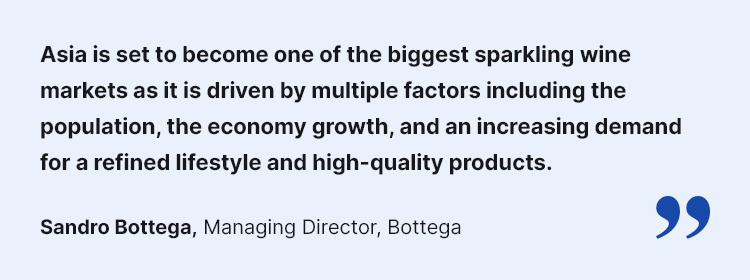
“Baijiu is China’s most traditional liquor and has the most sales globally by quantity, but there are definitely challenges for this liquid to break through the traditional construct of straight consumption, which in turn is hindering it from really making its mark on a global level,” Campari China Managing Director Pauline Cha said.
“Two of the core factors that it needs to meet to achieve this growth are to find a suitable format that is acceptable to all consumers in most markets, as well as a way to integrate itself into daily consumption.
“We believe that based on this, baijiu needs to utilise a cocktail strategy where more bartenders use it in cocktails so that it can find exposure to more new audiences in a format that they find familiar and acceptable, similar to how tequila broke into the scene with margaritas.”
Campari has partnered with Chinese baijiu giant Wuliangye to create the Wugroni cocktail – a negroni using baijiu to replace gin – in hopes of pursuing this route further.
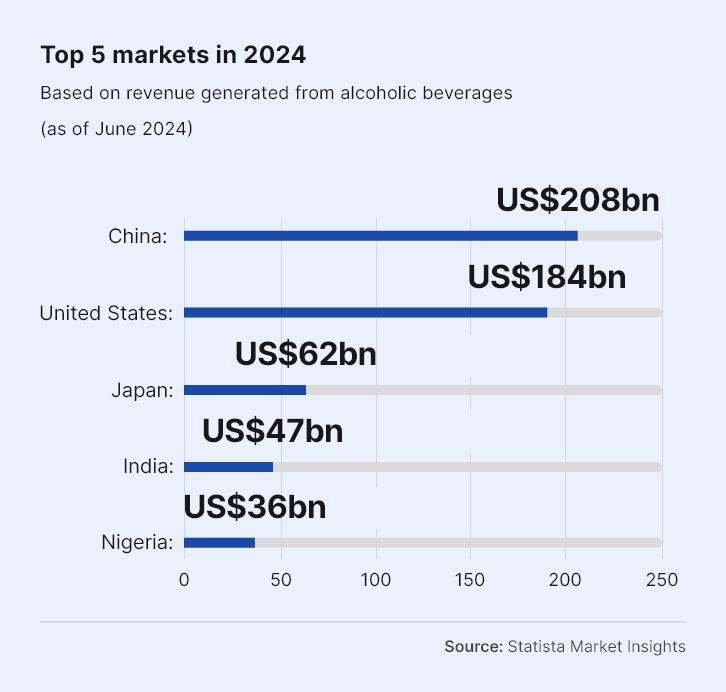
On the ready-to-drink format front, sparkling wine specialist Bottega stressed this as an important way to connect with consumers.
“There is a definite rise in demand for RTD products in the alcohol sector, and it is closely related to the convenience factor these products can provide,” Bottega Export Manager Airlines Valentina Dalle Mule told us.
“We have our RTD Lemon Spritz for example, which comes in cans so it is lighter than glass and transportation is easier whether on airplanes or just bringing these home from the supermarket.
“There is also much less fuss about preparation as it can just be popped and drank, possibly with the addition of ice cubes, instead of having to bring around all the ingredients for making a lemon spritz cocktail i.e. prosecco, limoncello, mint and ice.”
Bottega Managing Director Sandro Bottega has also pegged the Asian alcohol market as the one to watch, particularly when it comes to sparkling wines.
“Asia is set to become one of the biggest sparkling wine markets as it is driven by multiple factors including the population, the economy growth, and an increasing demand for a refined lifestyle and high-quality products,” he said.
"As a company, we have internally already agreed to reduce quantities for the EU market in favour of Asia, in order to satisfy demand from this region.
"This is because we are just that confident and sure that this is going to be our biggest market moving forward."
Conventional favourites
That is of course not to say that conventional alcoholic beverages are not doing well – beers for example are still seeing immense popularity in the region, according to a study by the Singapore Beer Industry Association (SBIA).
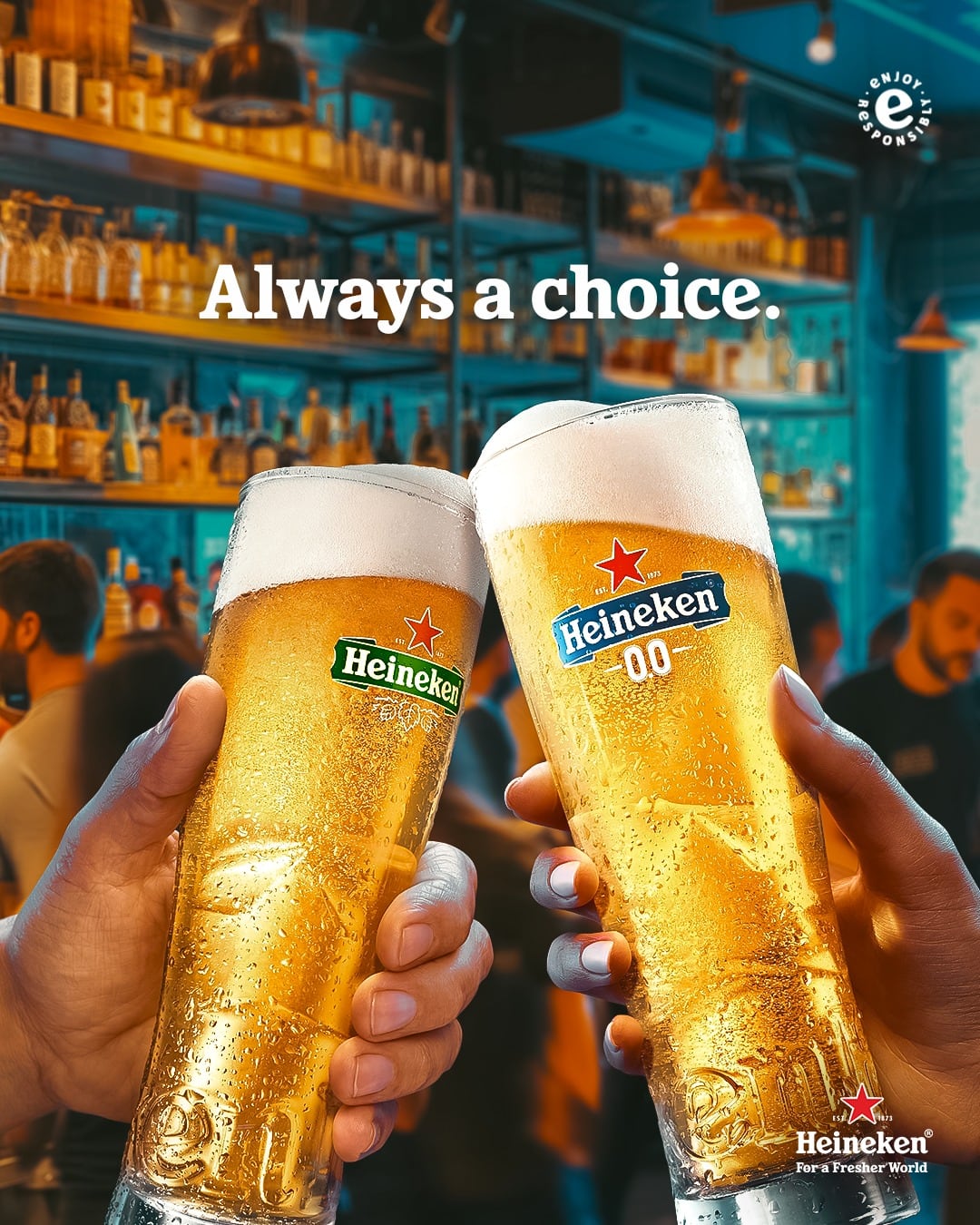
“The findings show that 75% of respondents listed beer as their favourite alcoholic drink, surpassing wine and spirits,” brewer of Heineken and Tiger beers Asia Pacific Breweries Singapore (APBS) Marketing Director Gerald Yeo told us.
“The findings not only underscores the popularity of beer, but also highlights its deep-rooted significance within local culture.
“The reasons that were given for this included an appreciation of its refreshing nature (68%) and the taste (65%).
“I am optimistic about the prospects for the beer sector in APAC as the landscape here is dynamic, marked by intensifying competition and a growing appetite for innovation.”
This sentiment was echoed by Thailand’s Carabao, an energy drink giant in the local market which recently decided to break into the beer space, pitting itself against fierce local competition from reigning beer giants Singha and Chang.
“The on-trade market for beer is quite saturated and dominated by both local and imported brands, so we are targeting the retailers route as our main strategy as we believe there is still a lot of potential for growth here,” Carabao Group Deputy MD and Chief Productions Officer Kamoldist Smuthkochorn said.
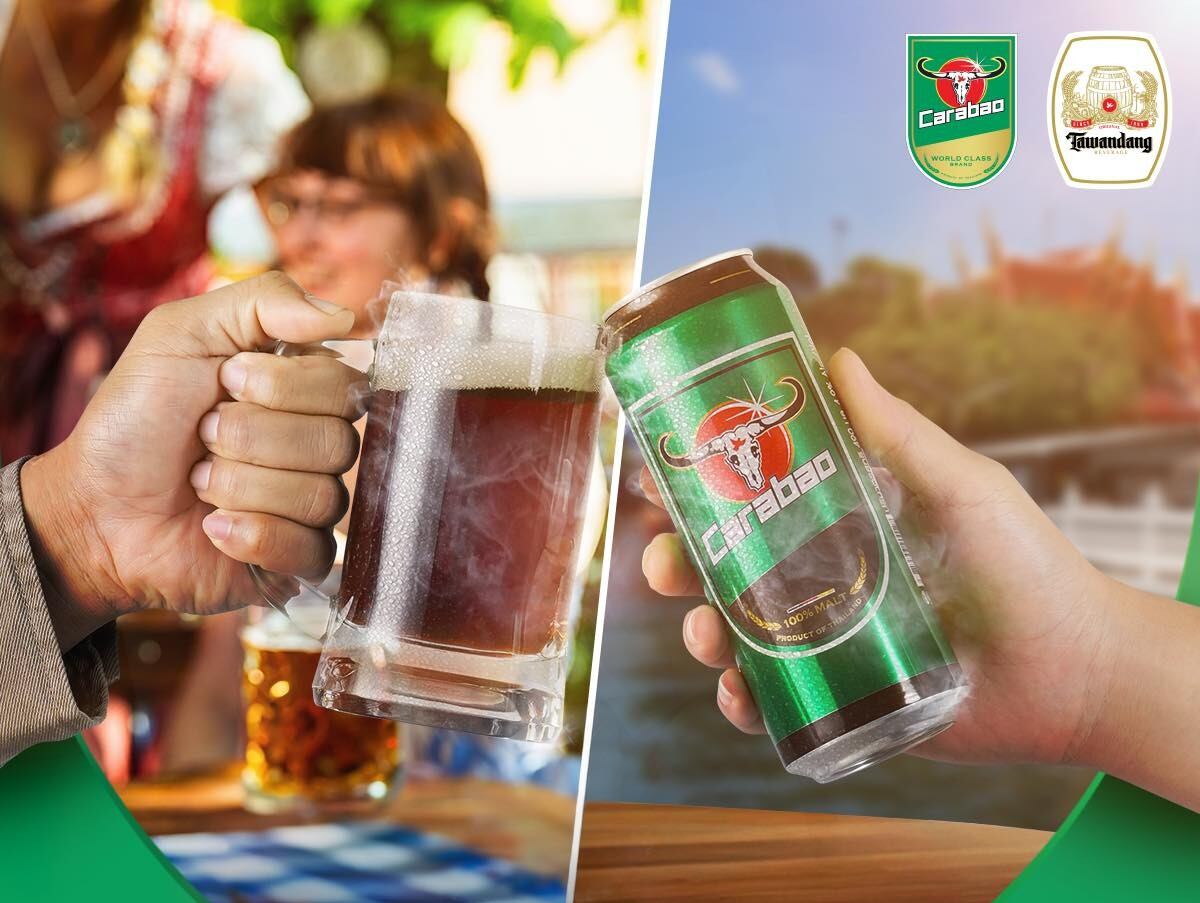
“The key here is to offer wide variety to consumers, so we also opted to launch all five products in our beer portfolio – lager, dark beer, wheat beer, rosee and IPA – instead of going the more careful route as the competition is definitely fierce.”
Pernod Ricard, the owner of multiple well-known brands such as Martell, Jameson, Chivas Regal, Malfy, Absolut and more, also believes that the alcohol sector in general is still seeing continued growth in the region.
“It is clear that consumers today are aspiring towards more premium choices when it comes to their alcohol purchases, and this is being driven by a number of factors including valuing quality over quantity,” Pernod Ricard Country Manager Singapore Alex Liu told us.
“This has become clear through the growth of our most premium product within our premium portfolio, the Royal Salute whiskey – pre-pandemic this was much less popular but recently it has been gaining a lot of attention with consumers seeking out the best quality.
“Another strategy that we as a company still find very important to both securing and retaining consumers is to invest time and money into creating experiences around their alcohol purchasing and consumption.
“This also contributes to their perception of quality, in addition to the actual ingredients and crafting of the product.”
Beer giant Carlsberg has also persistently committed to a premiumisation strategy for the past few years based on this principle.
Safer drinking
Recent years have also seen consumers demand more accountability from alcohol firms, as well as searching for more ways to help them with responsible drinking habits.
In line with this, Pernod Ricard recently launched its first digital label to provide extra information to consumers, available by scanning a QR code on the back of its bottles.
“Consumers today are asking how we are promoting drinking in moderation and responsible drinking, and we believe one of the important ways is to provide them with the information to make the best informed choices,” Liu said.
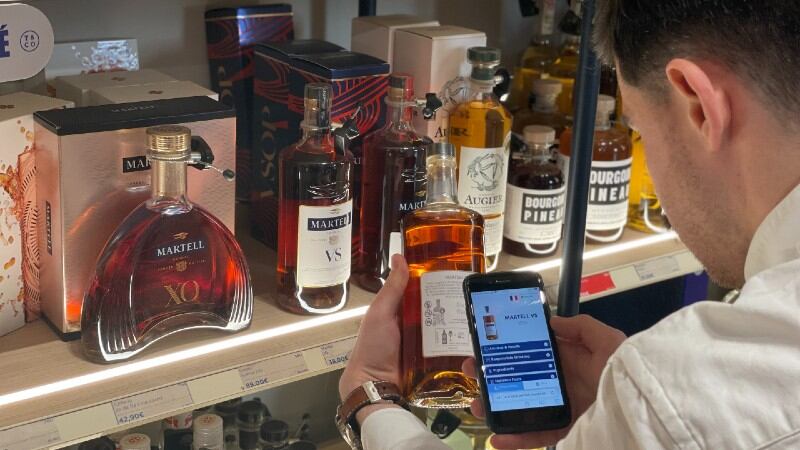
“It also comes back to the idea of choosing quality over quantity, as we are well aware that alcohol is great when consumed responsibly but can also be the source of health and social issues if done excessively.”
Industry bodies on a national level have also taken to promote the idea of responsible drinking more intensely, for example in Taiwan where the Taiwan Alcohol Beverage Association (TABA) and the Taiwan Beverage Alcohol Forum (TBAF) recently signed an agreement to adhere to Alcohol Industry Marketing Self-Regulation Standards.
“This is a a major advance towards a more mature, safe, and healthy drinking culture in Taiwan,” said Taiwan Beverage Alcohol Forum Chairman and Taiwan Pernod Ricard Managing Director Terence Ong.
“Such a gathering involving both leading domestic and international beverage alcohol companies to advocate for responsible marketing represents a critical milestone in the industry's evolution.”
The standards include a focus on managing marketing using social media influencers and the ethics surrounding this, specifically banning marketing to minors or the messaging that alcohol is a necessity for success; as well as underage drinking, safe drinking management, social cues and more.
On the horizon
The low-to-no alcohol beverages category gained significant popularity in tandem with consumer demands for healthier beverages, but the segment has yet to take off in as big a way as it has in western markets.
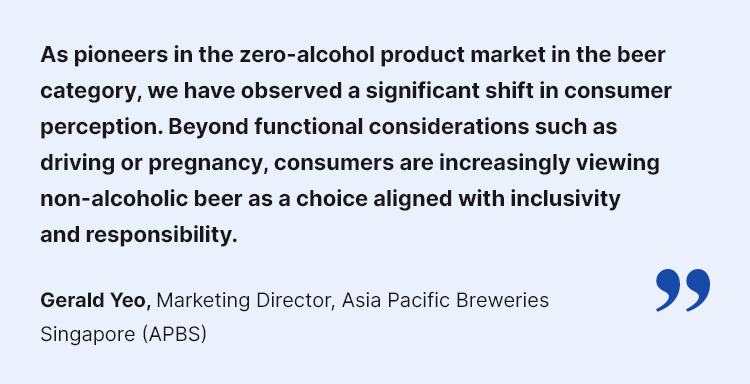
That said, the industry is still seeing growth here in APAC, driven by innovations from both smaller firms and large brands, and Heineken in particular with its Heineken 0.0 continues to believe in its potential.
“The demand for low-to-no alcohol products continues to grow steadily, with a notable 20.5% year-on-year increase in interest, according to the WGSN Search Index 2023,” Yeo said.
“However, it is important to recognise that this trend extends beyond the beer category, encompassing a wide range of non-alcoholic and low-alcohol beverages.
“We have observed a significant shift in consumer perception [of non-alcoholic beer], moving beyond functional considerations such as driving or pregnancy to a choice aligned with inclusivity and responsibility.”
On the other hand, Pernod Ricard has observed that hard liquors made from one plant in particular looks set to become the next big thing in Asia.
“Agave is looking like the next new trend and next big thing, so liquors like tequila and mezcal,” Liu said.
“Tequila has of course been around for a while but the trend we are noticing is that in South East Asia, consumers are being choosier regarding the agave used to make their drinks and now demand that this come from high quality sources, tying back into the premium trend.”


